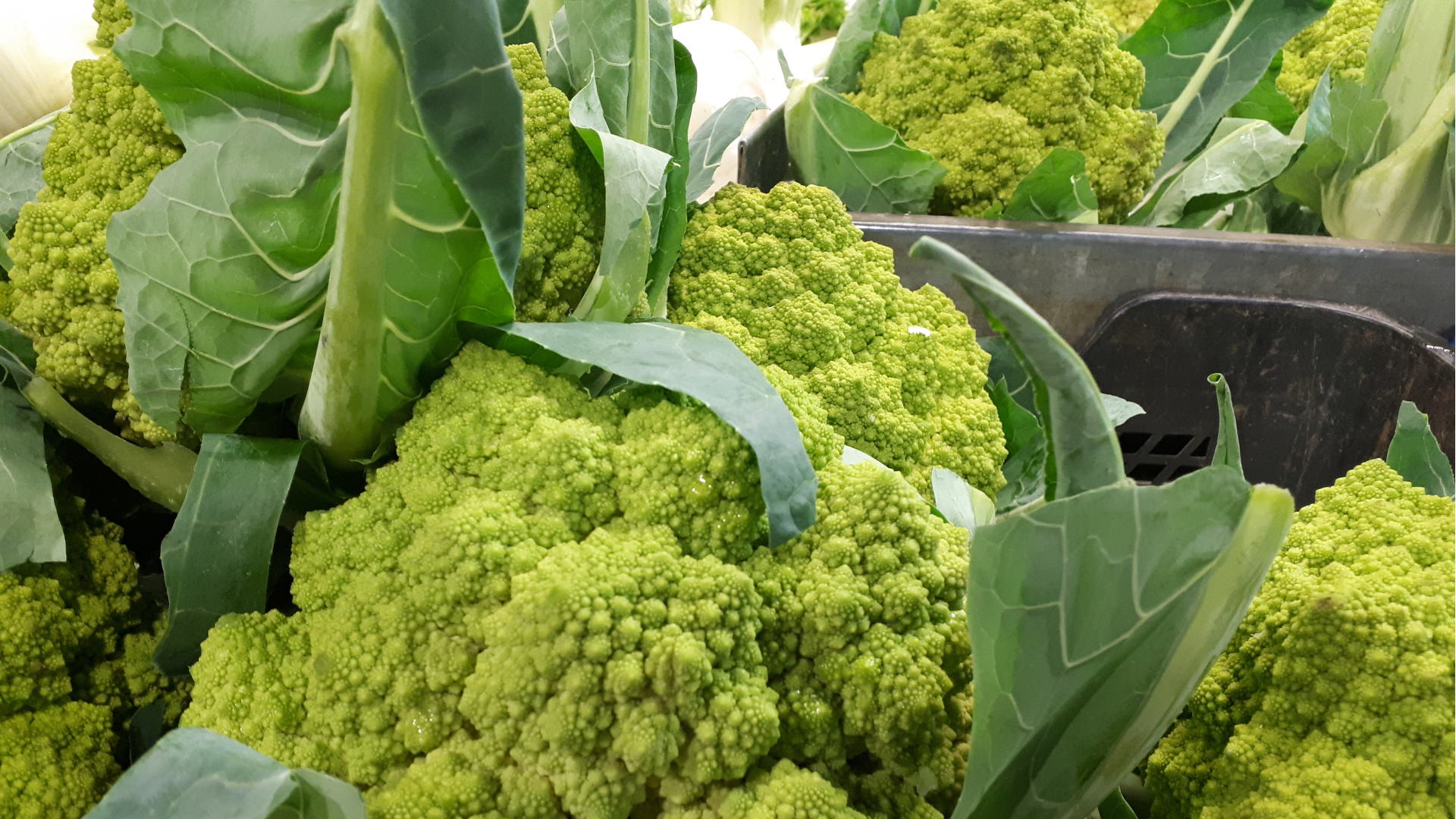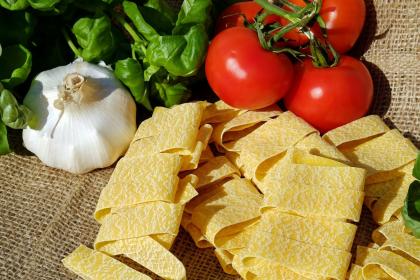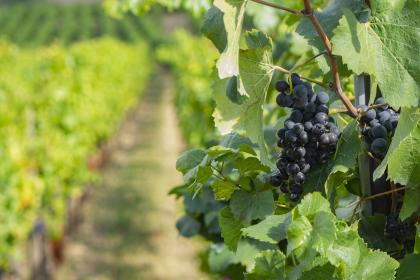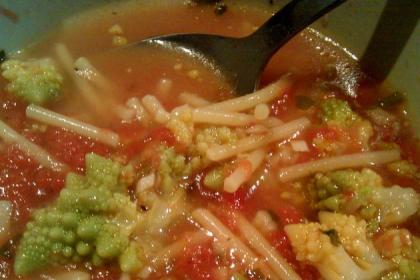
A mathematically beautiful superfood
Light and with a distinct intense flavor, it is a chartreuse, unique-looking vegetable and has a mesmerizing beauty: you definitely eat Romanesco broccoli with your eyes first. It is almost too pretty to eat: indeed, it is one of those marvels only nature can create, with a perfect geometry based on fractals and the Fibonacci numbers. To give it its characteristic pyramidal structure are in fact its many small spiral-arranged florets, which maintain the same form as the whole and repeat themselves at progressively smaller and smaller scale. In other words, each floret is a miniature broccoli and, even more surprisingly, the number of spirals falls within the well-known succession of the Pisan mathematician of the 13th century, in which each figure is the result of the sum of the two previous ones. But beauty is certainly not its only virtue. Rich in minerals and antioxidants, fibers and vitamins, this veggie with a “Roman soul” is wonderfully healthy thanks to its benefits and extraordinary nutritional properties which were known since ancient times.
Conquering the world
Broccoli is from the same family as cabbages and cauliflowers and it is thought to have originated in the eastern Mediterranean. It then arrived in the Greek & Roman world, enjoying growing success. In addition to being appreciated for its flavor, it was used for therapeutic purposes, as a “providential medicine” to cure the most varied ailments, from ulcers to colds. The Greeks extracted its active ingredients by making a decoction with its leaves, to be drunk hot or cold to purify the digestive system and treat inflammations. As evidenced in the recipes of the gastronome Apicius, Romans would boil them with a mixture of spices, onion, wine and oil or served them with creamy sauces made with aromatic herbs. They also used to eat raw broccoli before banquets, so the body would better absorb the large quantities of alcohol consumed. And from ancient Rome comes its name – from the Latin brachium, meaning arm, branch or shoot – which passed almost unchanged in most European languages, from English to Spanish.
When in Rome, call me “broccolo”
Although the selection of the cultivated variety we know today dates back to the 19th century, Roman broccoli quickly invaded and conquered the entire countryside around the city. And the bond with the local society is so strong and intense that in Rome no further words are needed when speaking of the Romanesco broccoli: Romans call it simply broccoli. Yesterday as today, Romanesco broccoli is a star in any dish but not only. From its main stalk (torso in Italian) comes the nickname “Torzetto” that the poet Giuseppe Gioacchino Belli gave to the Roman greengrocer “a li Serpenti” in the 1834 sonnet “Er testamento der Pasqualino”. In the same years, the food and wine literary critic Pellegrino Artusi recommended a special recipe made with Romanesco broccoli in one of his writings and Romanesco broccoli is also often quoted by Trilussa in his poems, the other great father of the city dialect. Lastly, it plays a special role in the Neo-realist masterpiece signed by Roberto Rossellini, with the pasta and broccoli soup that boils on the stove in the film “Rome, Open City”.
The cool-weather king
During falls and winter, when Romanesco broccoli is harvested, traditional Roman and Lazio cuisine transform it into tasty dishes. It holds up well under various cooking methods: by steaming it, it will not lose too many properties; for its flavor, it is a perfect addition to soups or flans; and as a side dish or as a condiment for a surprising first course, it is especially good boiled, roasted or sautéed with bacon and pecorino cheese, or “suffocated”, that is cooked raw with a white wine from the Castelli Romani. A recipe that belongs to the ancient Roman gastronomic tradition is the broccoli and arzilla (the Roman name for the skate) soup, thickened with spaghetti, a poor but tasty dish that was once a favorite on lean days, when meat was forbidden, especially during Lent. In many Roman houses, on the evening of Christmas Eve, a much loved side dish or antipasto are the broccoli fritters: golden, crispy, absolutely to try.
Broccoli fritters: the recipe
Ingredients
• 1 Romanesco broccoli
• 250 gr flour
• 3 gr brewer’s yeast
• 150 ml warm water
• Salt
• Vegetable oil
Instructions
To prepare the batter, dissolve the brewer’s yeast in water, add the flour and mix well until the mixture is homogeneous and without lumps. Cover with cling film and rest batter until the it doubles in volume. In the meantime, clean and wash the broccoli, and blanch the florets for about 10/12 minutes. Once cooled, pour vegetable oil into a saucepan and heat oil. Dip the florets in the batter, let excess batter run off and then fry in batches. Turn them occasionally until golden and crisp outside. Drain on paper towels, season with salt and serve them.
Traditional cuisine

Wine drinking culture in Rome

Christmas Time in Roman Cuisine
Il Natale è un’occasione per riunirsi in famiglia e condividere i piaceri della tavola
Lent

La Quaresima nella cucina romana è caratterizzata da piatti della tradizione e da ricette antiche e semplici











































